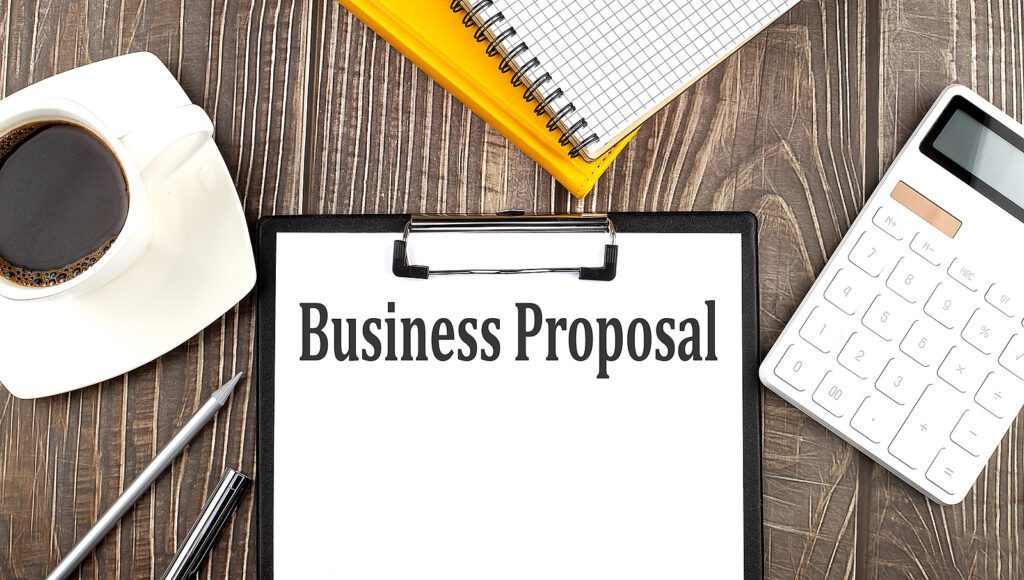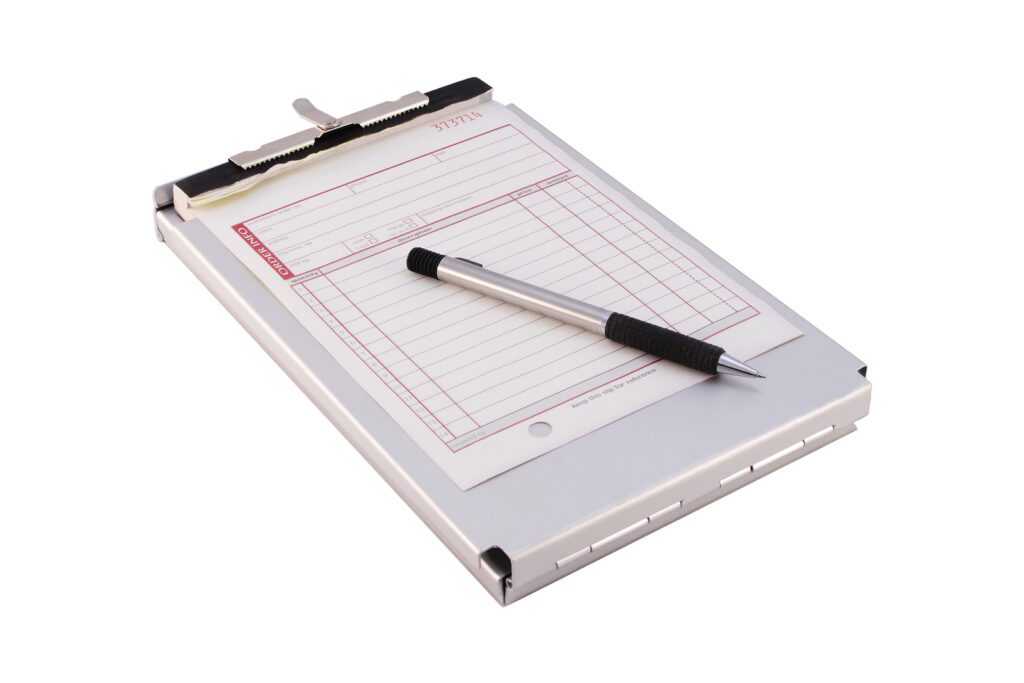The Power of the Proposal

Whether you’re just starting out with a new business or have owned a business for a while, one of the most important aspects of getting new clients is having a strong and consistent proposal.
Too many in the business world think the proposal is more of an afterthought. That the most important aspect of selling your services is the initial phone or in-person meeting with the client. Those are, of course, important too.
But, though there are aspects of those interactions that contribute to building a strong relationship foundation and client trust, the client’s ultimate decision is really made after they receive the proposal (also known as the estimate).
After all, they need to know important things like what your service costs, what that cost includes, and a clear understanding of how the process works if they were to hire you.

Many people just send an invoice-style estimate sheet with the costs listed along with some short descriptions like labor, materials, and other fees.
I made the mistake of doing that myself for many years until I realized how much I was leaving to chance and understood there was a better way.
Think of a proposal as your final opportunity to show them why your business services are not only unique but that you understand the problem they’re desperate to solve.
They want to know that you can honestly empathize with the discomfort, pain, or stress that the problem has created for them. It’s often the same reason why you started your service business in the first place.
I know the challenging experience that I had with my own parents downsizing move was the driving reason for starting my senior downsizing business in 2009.

But, in truth, you’re more than a “business”, you’re a guide. Their guide.
They’re looking for someone who can take charge, solve the problem and make the entire experience as easy as possible. For this reason, your success hinges on how well you structure your proposal.
Anyone who knows me knows I’m a rabid fan of Donald Miller, the New York Times Best Selling author and respected business guru/online educator who wrote “Marketing Made Simple” and “Building a Storybrand” (and no, this isn’t a paid endorsement).
His theory on marketing is simple, but genius, and it’s made a huge difference in the success of my businesses.
He believes that too many business owners try to fill the hero role. Instead, he says, they should be the guide that helps solve the problem and let the client be the hero.
What does that mean? Too often, businesses think that their message should be about pushing their business history, the number of years they’ve been in business, and that’s what gets customers.
The reality is, clients couldn’t care less. Why? Because there’s no direct benefit to them. They just want someone who knows what they’re doing to solve their problem and take away the pain.

Your proposal, then, is your business “love letter” to your customer that shows them you’ve got them covered.
So, your proposal should always be client-driven, clear, and follow a consistent formula using the following components (in order):
1. State your client’s problem clearly and simply.
Using senior downsizing as an example, this might be something like “At ‘We Downsize You’, we know that a downsizing move can feel really overwhelming if you don’t have a plan. You don’t know where to start, let alone know what to take with you or how to get rid of the rest.”
This doesn’t have to be a long and drawn-out explanation. Keep it concise and direct, but clear.
2. Address both the external problem and the internal problem that problem creates.
The external problem is the sense of helplessness that most people feel trying to tackle a house full of memories and possessions. The internal problem is the feelings of overwhelm or confusion they feel when they try to figure out where to start and how to make the right decisions about their stuff.
This does two things. First, it lets them know you clearly understand what they need help with. Second, it shows them that you know this isn’t like any other move and that it has emotional consequences.

3. Express empathy.
People want to know that you understand the pain they are feeling from this problem. So, sharing empathy lets them know you “get it” or you have personally experienced it.
You’ve already included a little of this in the previous section using words like overwhelm and confusion, but let’s take it to the next step.
“We understand how painful it is to have to make those hard decisions on what to take and what to keep.” or “We know facing a downsizing move is one of the hardest things a person will face in their lifetime.”
4. Provide authority.
This section is all about sharing your expertise in the field and showing them that you have what it takes to provide solutions that will make a real difference in their world.
An example might be “We Downsize You has helped thousands of clients have a more enjoyable and positive downsizing experience through our award willing personalized service and time-tested processes.”
Here’s where you can share awards, special training, years in service, and so on, but keep it light and short. Just enough to let them know you know what you’re doing and your passion for serving is front and center.

5. Provide “The Plan”.
Here’s where you tell your client what to expect when they hire you.
Break your process down to no more than 3 to 4 simple steps that they can easily understand.
Something like:
“Step 1. Sign the proposal
Step 2. The Team starts your purge process
Step 3. We pack and prepare you for move day
Step 4. We provide move day oversight and resettlement services to make you feel cozy and comfortable your first night in your new home.”
There are, of course, a lot of other steps within each of those steps, but that will only overwhelm them. Keep it simple and concise.
6. List the basic services and the benefits they’ll receive from them.
One of the biggest mistakes business owners make is listing their services on key marketing pieces like websites, brochures, and their proposals without explaining how they benefit the client.
Instead, list the services in the context of how they will benefit the client.
An example might be “Provide mover coordination services so you don’t have to sweat the details”.

7. Provide the price.
Always provide the pricing information in easy-to-understand, clear language. Break down the major components of the services by topic such as packing, materials, space planning, or move day oversight.
Making it clear will avoid confusion. Confusion contributes to delayed decision making and the whole purpose of a proposal is the remove confusion.
Be sure to include other pertinent information too like the payment forms you accept, when the payment is due, and if there’s a deposit required.
8. Include a deadline.
Including a time deadline in your proposal serves you two ways.
First, it tells the client that the pricing may change if they don’t act now. This protects your business from clients coming back months or even a year later wanting the same fee structure. Trust me, it happens.
Second, it shortens the decision-making window for the client and drives action. You both know that a decision needs to be finalized by a specific date.
9. Provide a cover letter.
A cover letter should include information that creates anticipation in the client’s mind. Briefly touch on key information to wet the client’s curiosity so they’ll read through the entire proposal.
You can do this by incorporating very brief (1-2 sentences) versions of the sections we’ve just talked about: The problem, how your solution will solve it, showing empathy and authority, then outlining the plan. Save the pricing specifics for the proposal section.
Close the letter by circling back to the problem you solve. Something like “With our time-tested downsizing processes, you won’t have to worry about being confused or overwhelmed during your move. We’ll make sure you feel right at home your very first night!”.
Painting the picture of what it will look and feel like when they finally move into their new home goes a long way in reducing stress and creating confidence in your services.
Having a consistent proposal format that’s “client-driven” will always set your business apart from your competitors. It’s your golden opportunity to shine and stand out from the crowd!
Interested in learning more about how to start your own senior downsizing business? Check out my course page for a variety of program options!
